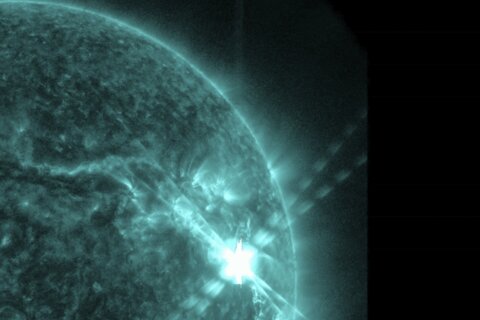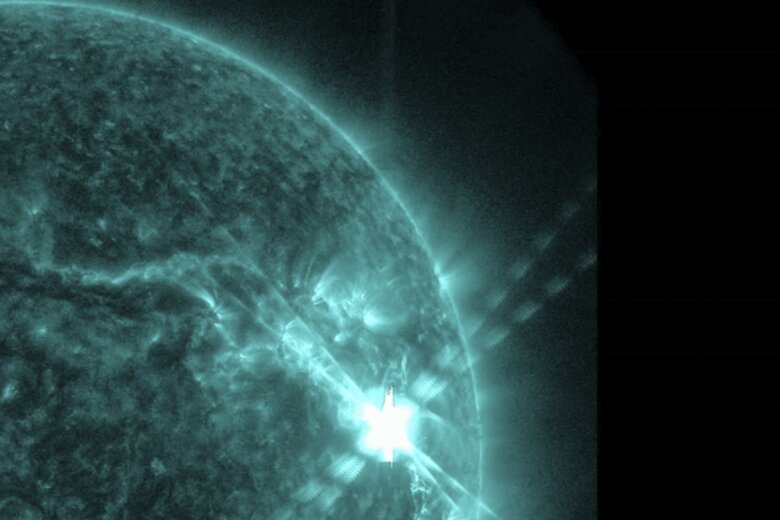
Earlier this week the National Weather Service recorded the largest solar flare since 2017.
The agency said the geomagnetic storm disrupted radio communications for two hours onboard some aircraft, but the effects might not be over yet. Over the weekend, this coronal mass ejection could lead to quite the light show — a colorful display of the aurora borealis or Northern Lights — in some sections of the country that normally don’t get to see the spectacle.
Greg Redfern, a NASA Solar system ambassador and WTOP Space reporter, said those looking for the northern lights are likely to be let down by Earth’s weather.
“Any effect of being able to see the northern lights, until the clouds clear, is not going to happen,” Redfern said, adding that “there isn’t any alert for our area” that would indicate a chance to see the northern lights Sunday night.
Over the next few days, Redfern said, there’s a chance for more strong storms to appear as the sun moves toward its “solar maximum.”
“This means that the sun is going to be more active,” Redfern said.
However, he says, the D.C. area shouldn’t give up hope when it comes to seeing the northern lights.
“Don’t give up hope,” Redfern said, “because we have seen aurora in Virginia three times this year.”








